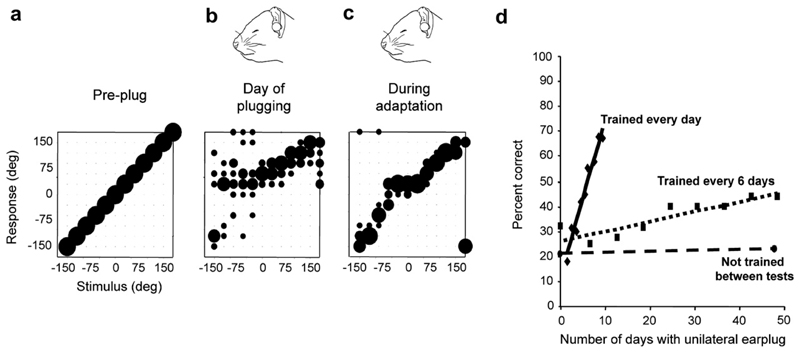Fig. 6.
Plasticity of spatial hearing in adult ferrets: (a–c): Stimulus-response plots showing the distribution of responses (ordinate) made by a ferret as a function of stimulus location in the horizontal plane (abscissa). The size of the dots indicates, for a given speaker angle, the proportion of responses made to different locations. Correct responses are those that fall on the diagonal line, whereas all other responses represent errors of different magnitude. Prior to occlusion of the left ear, the animal achieved 100% correct scores at all stimulus directions (a), but performed poorly, particularly on the side of the earplug, when the left ear was occluded (b). Further testing with the earplug still in place, however, led to a recovery in localization accuracy (c). (d) Mean change in performance (averaged across all speaker locations) over time in three groups of ferrets with unilateral earplugs. No change was found in trained ferrets (n = 3) that received an earplug for 6 weeks, but were tested only at the start and end of this period (circles and dashed regression line). Two other groups of animals received an equivalent amount of training while the left ear was occluded. Although the earplug was in place for less time, a much faster rate of improvement was observed in the animals that received daily training (n = 3; diamonds and solid regression line) compared to those that were tested every 6 days (n = 6; squares and dotted regression line). From Kacelnik et al. (2006).

